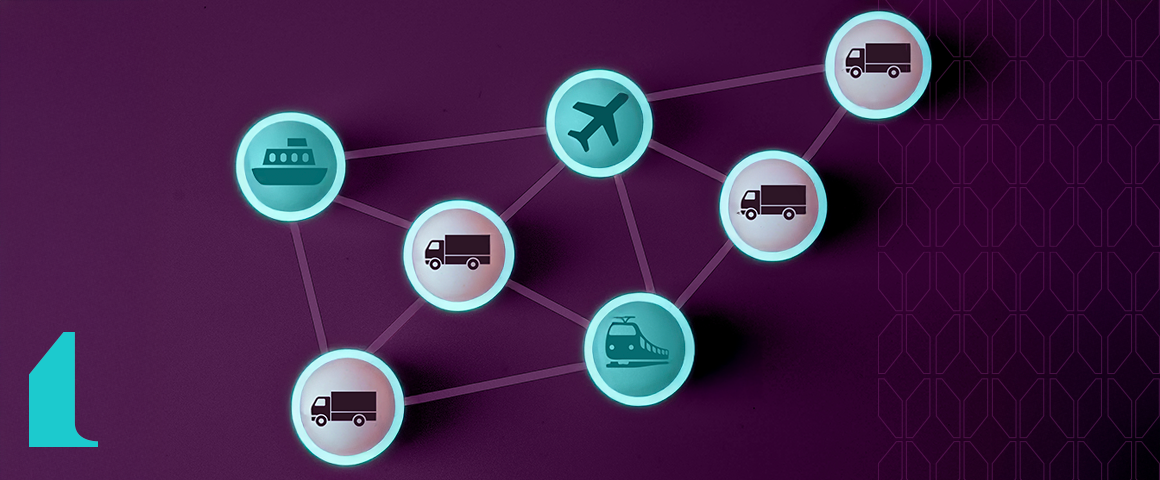What is an Enterprise Contract Management System?
While even managing a single agreement can become a complex task, the operations of Fortune 1000 companies are governed by an average of 20-40 thousand contracts. It is easy to see why modern enterprise contract management systems are needed – they help avoid forgotten clauses, unbilled revenue, and increased prices and provide a common ground for different departments.
In this article, we explore how enterprise contract lifecycle management software works and helps sales, legal, procurement, and finance teams manage a large volume of legal documents at the same time.
The Challenges of Managing Contracts at Scale
As businesses expand their operations and partnerships, the number of contracts they must manage increases exponentially. Large enterprises often juggle thousands – or even tens of thousands – of active agreements spanning various domains like sales, procurement, employment, and licensing. Handling such high contract volumes through conventional methods is an uphill battle rife with complexities and risks.
One of the primary challenges is the sheer administrative burden involved. Creating, reviewing, negotiating, and executing contracts requires significant time and effort from legal teams, subject matter experts, and stakeholders across the organization. This distracts them from higher-value tasks and can lead to bottlenecks that hinder business agility.
Additionally, manually tracking countless contractual obligations, key dates, renewal notifications, and performance metrics is an error-prone and daunting task. Oversights in this area can expose the enterprise to financial penalties, litigation risks, and reputational damage stemming from non-compliance or missed opportunities.
Fragmented and Manual Processes
Many enterprises still rely on fragmented and manual approaches to contract management, exacerbating the challenges posed by scale. Based on a survey of 80 organizations, 60% of companies rely on simple document management tools for contract management purposes.
Using a disparate array of tools like email, shared drives, spreadsheets, and local document storage leads to inefficiencies, redundancies, and version control issues.
These antiquated methods make it incredibly difficult to maintain a cohesive view of the contract landscape. Critical information gets siloed, increasing the risk of contradictory terms, missed renewals, and uninformed decision-making. Manual processes are also susceptible to errors during data entry, delegation, and handoffs between teams.
Lack of Visibility and Control
Without a centralized contract management system, companies lack the transparency and control they need to effectively mitigate risk. Scattered contract data makes it difficult to ensure regulatory compliance, identify unfavorable terms, or take advantage of opportunities to optimize revenue.
Insufficient transparency also hinders collaboration during contract negotiation and drafting. Stakeholders may be left in the dark about contractual obligations, preventing them from making informed decisions that protect the company’s interests.
In addition, the inability to track performance metrics such as spend, renewals, and contract expirations can lead to costly mistakes. Companies can inadvertently miss automatic renewal deadlines, continue to pay for services that are no longer needed, or fail to renegotiate suboptimal contracts. These failures have a direct impact on profitability and expose the company to significant financial and legal risks.
What is an Enterprise Contract Management System?
An enterprise contract management system is a centralized software solution designed to address the complexities and risks associated with managing large volumes of contracts. It serves as a comprehensive platform for organizations to streamline and optimize their contract processes throughout the entire lifecycle, from initiation and authoring to execution, monitoring, and renewal.
At its core, enterprise contract management software aims to eliminate the inefficiencies and vulnerabilities inherent in traditional manual and fragmented contract management approaches. Consolidating all contractual data and activities into a unified system empowers organizations with enhanced visibility, control, and collaboration capabilities.
These specialized solutions leverage advanced technologies, including automation, artificial intelligence, and robust security measures, to simplify and secure contract management operations. This enables enterprises to mitigate risks, improve compliance, and maximize the strategic value derived from their contractual agreements.
A Centralized Contract Repository
A key component of enterprise contract management software is a central repository where all contract documents and data are securely stored and organized. This single source of truth eliminates the risks associated with scattered, isolated, or duplicate contract information that can lead to inconsistencies, missed commitments, and poor decisions.
With a centralized repository, authorized stakeholders across the organization can easily access, search, and retrieve the latest versions of contracts, clauses, and associated documentation. This improved accessibility fosters better collaboration, enabling teams to work cohesively while ensuring compliance with organizational policies and regulatory requirements.
Furthermore, a secure contract repository guards against unauthorized access, data breaches, and accidental loss or deletion, providing enterprises with the peace of mind that their critical contractual information is safeguarded.
Automated Workflows and Collaboration
Enterprise contract lifecycle management software streamlines and accelerates contract processes through intelligent workflow automation and robust collaboration capabilities. By automating repetitive tasks and enforcing predefined rules and approval hierarchies, these solutions minimize manual intervention, reduce errors, and accelerate cycle times.
Automated workflows can guide contracts through each stage of the lifecycle, from drafting and negotiation to approvals and execution. They ensure adherence to organizational policies, regulatory requirements, and best practices, while simultaneously alerting stakeholders and facilitating their timely input.
Collaboration features within enterprise contract management systems enable seamless communication and coordination among cross-functional teams, external parties, and geographically dispersed stakeholders. This includes capabilities for co-authoring, redlining, commenting, and version control, ensuring that all parties remain aligned throughout the contract lifecycle.
By empowering improved collaboration, companies can leverage the collective expertise of subject matter experts, legal teams, and stakeholders, resulting in more favorable and compliant contractual agreements. At the same time, automated workflows and centralized data prevent bottlenecks, shorten approval cycles, and ultimately increase the company’s flexibility and responsiveness.
What Are the Unique Aspects of Enterprise Contract Lifecycle Management
While the fundamental principles of contract lifecycle management (CLM) remain consistent across organizations, enterprise-level CLM presents unique challenges and requirements that differentiate it from CLM implementations at smaller businesses or mid-sized companies.
Contract Volume and Complexity
One of the primary distinctions lies in the sheer volume and complexity of contracts that enterprises must manage. Large organizations often have tens of thousands of active agreements spanning a wide range of domains. This high contract density necessitates robust CLM solutions capable of handling vast quantities of data while maintaining visibility, control, and efficient workflows.
The contractual agreements within enterprises tend to be more intricate, involving multiple parties, intricate terms and conditions, and stringent regulatory requirements. This complexity demands advanced CLM capabilities, such as intelligent contract authoring, risk scoring, and compliance checks, to ensure that agreements are thoroughly reviewed and optimized.
Cross-Functional Collaboration
In enterprises, contract management is a cross-functional endeavor involving various departments and stakeholders. Legal teams play a crucial role in reviewing and approving contractual agreements. However, several other departments, including sales, procurement, finance, human resources, and subject matter experts from respective business units, are actively involved in the contract lifecycle.
Enterprise CLM solutions must facilitate seamless collaboration among these diverse teams, enabling co-authoring, redlining, commenting, and version control. Furthermore, these solutions should integrate with other core business systems, such as customer relationship management (CRM), enterprise resource planning (ERP), and procurement platforms, to ensure data consistency and streamlined workflows across the organization.
Departmental Contract Types
While the types of contracts managed may vary across industries, several key contract categories are commonly encountered within enterprises:
- Sales contracts: These agreements govern the terms and conditions of product or service sales, including pricing, delivery, warranties, and payment terms. Sales teams heavily rely on efficient contract management to accelerate quote-to-cash cycles and maintain strong customer relationships.
- Procurement and vendor contracts: Enterprises engage with numerous suppliers and vendors for goods and services. Procurement teams leverage CLM solutions to negotiate favorable terms, track performance, and optimize spend management.
- Employment contracts: Human resources departments utilize CLM systems to manage employment agreements, including offer letters, non-disclosure agreements (NDAs), and employee policies, ensuring compliance with labor regulations and consistent onboarding processes.
- Licensing and intellectual property agreements: Enterprises often license proprietary technologies, software, or intellectual property from third parties. CLM solutions help legal teams review and manage these agreements to protect the company’s interests and mitigate infringement risks.
- Partnership and joint venture contracts: Enterprises frequently engage in strategic partnerships, joint ventures, or mergers and acquisitions, necessitating the management of complex contractual agreements governing the terms of these collaborations.
Governance, Risk, and Compliance
Enterprises operate in heavily regulated environments, subjecting them to strict compliance requirements across various domains. These include data privacy regulations like the General Data Protection Regulation (GDPR) and the California Consumer Privacy Act (CCPA), financial reporting standards such as those related to the LIBOR transition, and industry-specific regulations like the Health Insurance Portability and Accountability Act (HIPAA) in healthcare.
Robust CLM solutions play a vital role in enabling enterprises to maintain comprehensive audit trails, enforce internal policies and approval hierarchies, and proactively identify and mitigate contractual risks associated with these complex regulatory frameworks. For instance, CLM systems can help organizations track and manage GDPR-compliant data processing agreements or ensure HIPAA-compliant business associate agreements are in place.
Advanced features like clause libraries, risk scoring, and compliance monitoring empower enterprises to negotiate favorable terms, avoid unfavorable commitments, and align their legal strategies with broader business objectives. This approach minimizes exposure to costly litigation, fines, or reputational damage that could result from non-compliance with regulations like CCPA or mismanagement of LIBOR-related contract transitions.
Key Features of Enterprise Contract Management Software
When evaluating enterprise contract lifecycle management software, organizations should prioritize solutions that offer robust features to streamline the entire contract lifecycle, integrate with critical business systems, and mitigate contractual risks while ensuring regulatory compliance.
Contract Lifecycle Management
Understanding that contract lifecycle management (CLM) goes far beyond simple contract storage or document creation is crucial. While basic contract management might focus on these elements, true CLM encompasses the entire lifespan of a contract, from inception to expiration or renewal. This comprehensive approach is essential for enterprise-grade solutions.
CLM includes features that support every stage of a contract’s lifecycle:
- Pre-execution: Intelligent authoring, template management, and clause libraries
- Negotiation: Collaborative redlining, version control, and approval workflows
- Execution: e-signatures and contract finalization
- Post-signature: Obligation management, performance tracking, and renewal management
This end-to-end approach ensures that contracts are not just stored, but actively managed and leveraged throughout their entire lifecycle.
AI-powered insights and analytics play a pivotal role in modern CLM software. These solutions can leverage natural language processing and machine learning to extract key data points, analyze contract terms, and provide risk scoring or compliance assessments. This empowers organizations to make informed decisions, identify potential issues proactively, and optimize contractual agreements at every stage of the lifecycle.
Furthermore, robust CLM systems offer comprehensive reporting and dashboarding capabilities, providing real-time visibility into contract portfolios, performance metrics, and bottlenecks across the entire contract lifecycle. This data-driven approach enables stakeholders to monitor adherence to service-level agreements (SLAs), track financial obligations, and seize renegotiation or renewal opportunities, ensuring that contracts continue to deliver value long after they’re signed.
Intuitive User Interface and Advanced Search Capabilities
A standout feature of top-tier enterprise contract management software is its user-friendly interface, designed to simplify complex contract processes. Unlike many CLM solutions that can be cumbersome to navigate, Malbek offers an intuitive design that makes accessing and managing contracts effortless for users across the organization.
Paired with this streamlined interface are powerful search and retrieval capabilities. These go beyond basic keyword searches, allowing users to quickly locate specific contracts, clauses, or data points using advanced filters. This combination of ease of use and robust functionality significantly enhances user adoption and overall efficiency.
Integration Capabilities
For enterprises, integrating contract management software with other critical business applications is crucial for maximizing efficiency and ensuring data consistency. Malbek’s unique approach keeps contracts at the center, offering seamless integration with enterprise resource planning (ERP) systems, customer relationship management (CRM) platforms, and procurement solutions enables organizations to leverage contractual data across various business functions.
This integration methodology enables organizations to leverage contractual data across various business functions effortlessly. Malbek’s Master Data storage captures supplier or counterparty details, allowing customers to easily plug existing ERP or supplier management system datasets into their contracts and workflows. This ensures data accuracy, consistency, and cleanliness between old and new contracts while creating critical time savings during contract requests.
By connecting ECM with ERP systems, enterprises can gain insights into supplier performance, pricing trends, and purchasing patterns, facilitating better-negotiated contracts and optimized spending. CRM integrations streamline the quote-to-cash process, ensuring accurate and up-to-date contract data is accessible to sales teams.
Integrations with e-signature providers and document management systems also enhance the overall user experience, accelerating contract execution and simplifying online storage and retrieval.
Compliance and Risk Management
In today’s highly regulated business environment, robust compliance and risk management capabilities are essential for enterprise contract management software. These solutions should enable organizations to proactively identify and mitigate contract risks, ensure compliance with internal policies and external regulations, and maintain a comprehensive audit trail.
Modern ECM platforms use artificial intelligence and machine learning to systematically analyze contracts, identify potential compliance issues, and extract important details for reporting. They also enable organizations to set up custom rule sets, approval hierarchies, and notification workflows to enforce compliance throughout the contract lifecycle.
Risk management capabilities such as clause libraries, fallback provisions, and clause scoring help companies negotiate favorable terms, avoid unfavorable obligations, and align legal strategies with overall business objectives. By providing a central repository for contract data and documents, ECM solutions facilitate audits, minimize the risk of litigation, and protect against reputational damage.
In addition, enterprise-wide security measures such as role-based access controls, data encryption, and audit trails ensure that sensitive contract data remains protected from unauthorized access or tampering.
Advanced AI Integration
Malbek stands out in the enterprise CLM space with its native AI integration, a core component of the platform since its inception rather than an afterthought. This AI-first approach enables customers to build and customize AI term and clause models self-service, extending the out-of-the-box functionality.
Malbek’s AI capabilities include guided playbook building, enhancing contract creation and negotiation processes. This comprehensive AI empowers enterprises to manage contracts more efficiently, and leverage advanced analytics across their entire contract portfolio.
For a visual overview of Malbek’s core features, please see our detailed video.
Evaluating and Implementing Enterprise Contract Management
Adopting an enterprise contract management solution is a strategic investment that requires careful evaluation and planning. Organizations must assess their unique requirements, identify suitable solutions, and implement the chosen system effectively.
Identifying Requirements and Use Cases
Before evaluating enterprise contract management solutions, organizations should conduct a comprehensive assessment to identify their specific needs and use cases. This process typically involves interviews with stakeholders across various departments, including legal, procurement, sales, and finance, to understand their pain points, existing processes, and desired improvements.
By mapping out the entire contract lifecycle and associated workflows, organizations can pinpoint areas that would benefit most from automation, standardization, and enhanced collaboration. This exercise also helps to identify integration requirements with other core business systems, such as ERP, CRM, and procurement tools.
It is also crucial to consider factors like contract volumes, complexity, and regulatory compliance obligations, as these will influence the features and capabilities required from an enterprise contract management system.
Change Management Considerations
Implementing a new enterprise contract management system involves significant process changes and cultural shifts within an organization. Effective change management is vital to ensure a smooth transition, user adoption, and the realization of the system’s full potential.
Organizations should develop a comprehensive training plan to educate end-users on the new system’s features, workflows, and best practices. Hands-on training sessions, coupled with detailed documentation and ongoing support, can help overcome resistance to change and foster user confidence.
Clear communication is equally important, with regular updates and messaging from leadership to reinforce the strategic rationale behind the implementation and its expected benefits. Involving key stakeholders and champions from various departments can also help build buy-in and encourage cross-functional collaboration.
Organizations should also consider piloting the system with a select group before a broader rollout, allowing for feedback and refinements to be incorporated. Establishing governance structures, defining roles and responsibilities, and instituting policies for system usage are also crucial steps in the implementation process.
FAQ
What is an Enterprise Contract Management System?
An Enterprise Contract Management System is a centralized software solution designed to handle the complexities of managing large volumes of corporate contracts. It streamlines the contract lifecycle, from initiation to renewal, enhancing visibility, control, and collaboration across departments.
How can an Enterprise Contract Management System improve compliance in corporate contract management?
By providing a centralized repository for all agreements, an Enterprise Contract Management System ensures that terms, obligations, and deadlines are easily accessible. Automated workflows and predefined rules enforce internal policies and regulatory requirements, minimizing the risk of non-compliance and reducing the likelihood of penalties and litigation.
What are the benefits of contract management using advanced CLM solutions?
Advanced CLM (Contract Lifecycle Management) solutions offer benefits such as enhanced visibility into contract terms, reduced administrative burden through automation, improved compliance, and minimized risks of financial penalties and litigation. These systems also facilitate better cross-functional collaboration and efficient management of complex corporate contracts.
How does ERP contract management integration enhance the process of managing agreements?
Integrating an Enterprise Contract Management System with ERP (Enterprise Resource Planning) systems enhances corporate contract management by ensuring data consistency and streamlining workflows. This integration provides insights into supplier performance, pricing trends, and purchasing patterns, facilitating better negotiation and optimized spending. It also helps maintain accurate and up-to-date contract data across various business functions.
Conclusion
Enterprise contract management systems have become indispensable tools for organizations that want to optimize their contract processes, minimize risk, and increase strategic value. By centralizing contract data, automating workflows, and enabling cross-functional collaboration, these solutions help organizations overcome the challenges associated with managing large volumes of enterprise contracts.
With robust features for intelligent contract authoring, AI-powered analytics, and seamless integration with core business systems, enterprise contract management software streamlines the contract lifecycle, reduces operational costs, and enhances decision-making. In addition, advanced risk management and compliance capabilities help organizations manage regulatory complexity, proactively identify potential issues, and protect against costly litigation or reputational damage.
As enterprises continue to prioritize agility, efficiency, and risk mitigation, the adoption of enterprise contract management solutions will become increasingly important. By carefully assessing their requirements, selecting the right solution, and implementing it effectively, companies can realize the full potential of their contractual agreements, strengthening relationships with customers, suppliers, and partners while maximizing profitability and long-term success.







